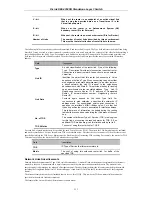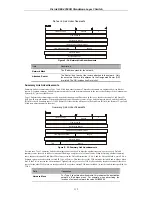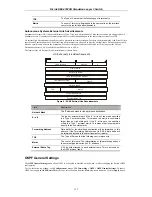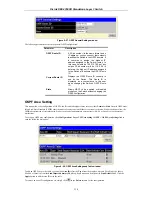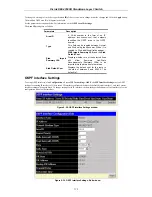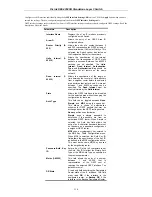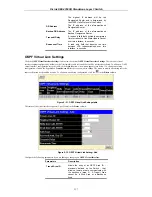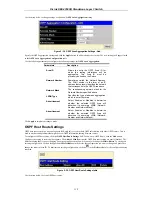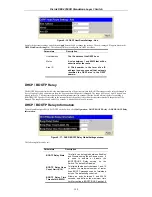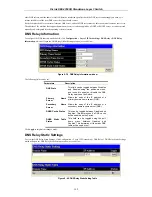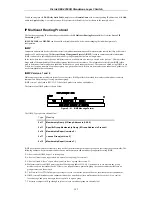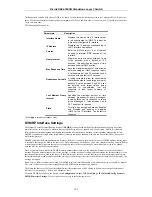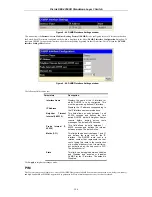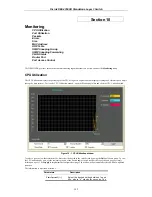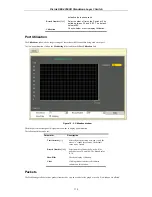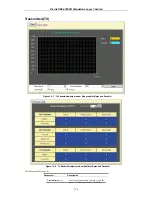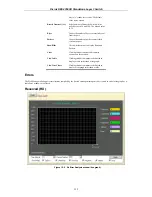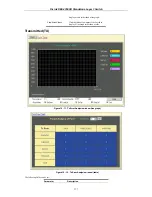
D-Link DES-3350SR Standalone Layer 3 Switch
123
To add an entry into the
DNS Relay Static Table
, simply enter a
Domain Name
with its corresponding IP address and click
Add
under the
Apply
heading. A successful entry will be presented in the table below, as shown in the example above.
IP Multicast Routing Protocol
The functions supporting IP multicasting are added under the
IP Multicast Routing Protocol
folder, from the
Layer 3 IP
Networking
folder.
IGMP
,
DVMRP
, and
PIM-DM
can be enabled or disabled on the Switch without changing the individual protocol’s
configuration.
IGMP
Computers and network devices that want to receive multicast transmissions need to inform nearby routers that they will become
members of a multicast group. The
Internet Group Management Protocol (IGMP
) is used to communicate this information.
IGMP is also used to periodically check the multicast group for members that are no longer active.
In the case where there is more than one multicast router on a subnetwork, one router is elected as the ‘querier’. This router then
keeps track of the membership of the multicast groups that have active members. The information received from IGMP is then
used to determine if multicast packets should be forwarded to a given subnetwork or not. The router can check, using IGMP, to see
if there is at least one member of a multicast group on a given subnetwork. If there are no members on a subnetwork, packets will
not be forwarded to that subnetwork.
IGMP Versions 1 and 2
Multicast groups allow members to join or leave at any time. IGMP provides the method for members and multicast routers to
communicate when joining or leaving a multicast group.
IGMP version 1 is defined in RFC 1112. It has a fixed packet size and no optional data.
The format of an IGMP packet is shown below:
Figure 9 - 41. IGMP Message Format
The IGMP Type codes are shown below:
Type Meaning
0x11
Membership Query (if Group Address is 0.0.0.0)
0x11
Specific Group Membership Query (if Group Address is Present)
0x16
Membership Report (version 2)
0x17
Leave a Group (version 2)
0x12
Membership Report (version 1)
IGMP packets enable multicast routers to keep track of the membership of multicast groups, on their respective subnetworks. The
following outlines what is communicated between a multicast router and a multicast group member using IGMP.
1.
A host sends an IGMP “report” to join a group
2.
A host will never send a report when it wants to leave a group (for version 1).
3.
A host will send a “leave” report when it wants to leave a group (for version 2).
4.
Multicast routers send IGMP queries (to the all-hosts group address: 224.0.0.1) periodically to see whether any group
members exist on their subnetworks. If there is no response from a particular group, the router assumes that there are no
group members on the network.
5.
The Time-to-Live (TTL) field of query messages is set to 1 so that the queries will not be forwarded to other subnetworks.
6.
IGMP version 2 introduces some enhancements such as a method to elect a multicast querier for each LAN, an explicit
leave message, and query messages that are specific to a given group.
7.
The states a computer will go through to join or to leave a multicast group are shown below:
Summary of Contents for DES-3350SR
Page 1: ...D Link DES 3350SR Standalone Layer 3 Switch User s Guide...
Page 80: ...D Link DES 3350SR Standalone Layer 3 Switch 70 Figure 7 57 The Client...
Page 138: ...D Link DES 3350SR Standalone Layer 3 Switch 128 Click Apply to implement changes made...
Page 160: ...D Link DES 3350SR Standalone Layer 3 Switch 150 Figure 10 33 PIM Neighbor Table...
Page 188: ......



